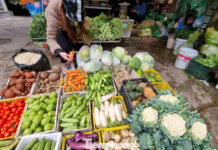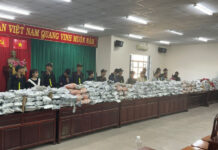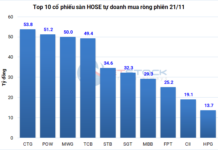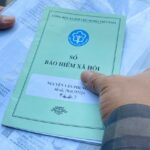
According to statistics from the General Department of Customs, durian exports in October reached only $212 million, a significant drop of 68.4% compared to September and a nearly 40% decline from the same period last year.
In terms of market performance, China remains the largest importer of Vietnamese durian, accounting for over 90% of total exports. However, in October, import volumes from China experienced a sharp decline, falling by 70% compared to September and over 42% from the previous year, reaching just under $190 million.
Other markets, including Thailand, Hong Kong, Taiwan, and South Korea, also recorded decreases ranging from 40% to 56% compared to the previous month. Notably, Cambodia did not import any durian from Vietnam in the past month.
While the key markets for Vietnamese durian witnessed a decline in imports, smaller markets showed strong growth. Papua New Guinea, for example, reached $1.8 million, a 550% increase, while exports to the US hit $1.5 million, a 63% rise.
Mr. Dang Phuc Nguyen, Secretary-General of the Vietnam Fruit and Vegetable Association, attributed the situation to the scarcity of durian since mid-October, following a positive export performance in September. He further explained that extreme weather conditions, including prolonged rain and intense sunlight, significantly impacted yield and fruit quality.

The unusual weather patterns this year have adversely affected the durian harvest in key growing regions in the Central Highlands and the South-Eastern region. Many durians in these areas were of poor quality and failed to meet export standards.
Additionally, the early conclusion of the durian season compared to previous years has restricted supply, directly impacting export volumes. Towards the end of the season, many durian farmers faced losses, resulting in reduced yields and insufficient quantities for export.
Furthermore, in the off-season in the Mekong Delta, many farmers lacked the technical knowledge to properly manage their trees, and the unfavorable weather caused heat shock and massive flower shedding. Consequently, the fruiting rate was only 30-50%.
In 2024, Vietnam set an ambitious goal of exporting $3.5 billion worth of durian. However, according to Mr. Nguyen, the decline in yield during the main and off-seasons has made this target challenging to achieve.
“Currently, Vietnam has only the off-season durian, mainly from the Mekong Delta provinces. Unfortunately, this off-season has also seen a poor harvest, resulting in very low yields. Therefore, the forecast for the last two months of the year is not optimistic. Durian exports for the entire year are expected to reach a maximum of $3.3 billion, falling short of previous estimates by about $200 million,” shared Mr. Nguyen.
In a separate development, data from the Chinese Customs revealed that in September, durian imports into China surpassed $894 million, a substantial increase of 58% in volume and 39% in value compared to the same period in 2023. Overall, in the first nine months of 2024, China spent $6.2 billion on importing approximately 1.38 million tons of durian, an 11% volume increase and a nearly 6% value rise.
Notably, in September, Vietnam emerged as the largest supplier of durian to China. During that month, Vietnamese durian exports to China reached nearly 177,000 tons, valued at almost $641 million, accounting for 72% of China’s durian imports. This marked a remarkable surge of 90% in volume and 72% in value compared to September 2023.
For the first nine months of this year, durian exports from Vietnam to China reached nearly 618,000 tons, generating $2.45 billion, reflecting a substantial increase of 72% in volume and 57% in value compared to the same period last year. Vietnam is the second-largest exporter of durian to the Chinese market, capturing approximately 40% of the imported durian market share in China.
Why Fining Banks for Forcing Insurance on Borrowers Matters?
If banks bundle non-mandatory insurance products with their services, they could face hefty fines ranging from 400 million to 500 million VND.
The Prime Minister Calls on US Businesses to Enhance Trade and Investment Ties with Vietnam
On November 27, the Vietnam-US Business Summit, themed “Policies and Approaches to Ensure Mutual Benefits in Trade Relations,” took place in Hanoi. This is the seventh time the Vietnam Chamber of Commerce and Industry (VCCI) has collaborated with the American Chamber of Commerce (AmCham) in Hanoi and the US Chamber of Commerce in Washington to organize this prestigious event.









































